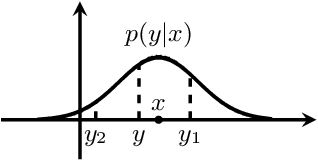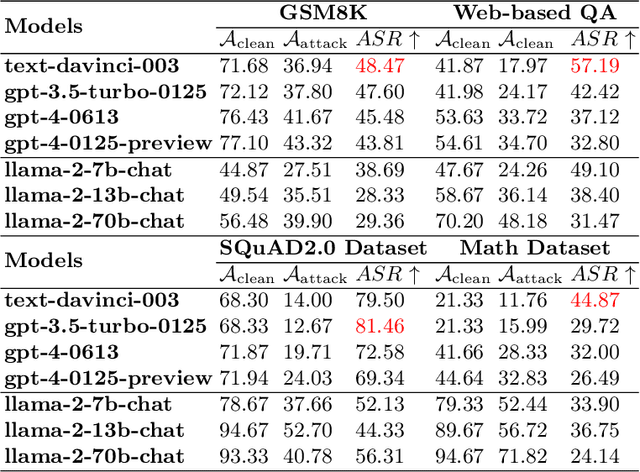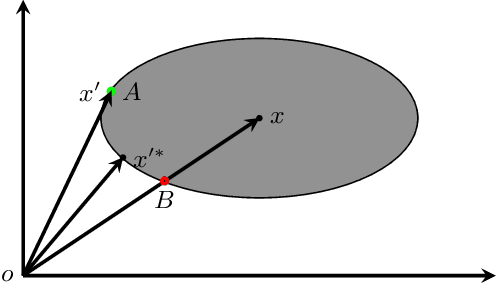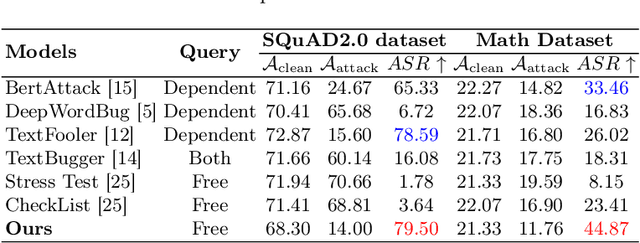Qinkai Yu
GROK: From Quantitative Biomarkers to Qualitative Diagnosis via a Grounded MLLM with Knowledge-Guided Instruction
Oct 05, 2025Abstract:Multimodal large language models (MLLMs) hold promise for integrating diverse data modalities, but current medical adaptations such as LLaVA-Med often fail to fully exploit the synergy between color fundus photography (CFP) and optical coherence tomography (OCT), and offer limited interpretability of quantitative biomarkers. We introduce GROK, a grounded multimodal large language model that jointly processes CFP, OCT, and text to deliver clinician-grade diagnoses of ocular and systemic disease. GROK comprises three core modules: Knowledge-Guided Instruction Generation, CLIP-Style OCT-Biomarker Alignment, and Supervised Instruction Fine-Tuning, which together establish a quantitative-to-qualitative diagnostic chain of thought, mirroring real clinical reasoning when producing detailed lesion annotations. To evaluate our approach, we introduce the Grounded Ophthalmic Understanding benchmark, which covers six disease categories and three tasks: macro-level diagnostic classification, report generation quality, and fine-grained clinical assessment of the generated chain of thought. Experiments show that, with only LoRA (Low-Rank Adaptation) fine-tuning of a 7B-parameter Qwen2 backbone, GROK outperforms comparable 7B and 32B baselines on both report quality and fine-grained clinical metrics, and even exceeds OpenAI o3. Code and data are publicly available in the GROK repository.
A Clinician-Friendly Platform for Ophthalmic Image Analysis Without Technical Barriers
Apr 22, 2025Abstract:Artificial intelligence (AI) shows remarkable potential in medical imaging diagnostics, but current models typically require retraining when deployed across different clinical centers, limiting their widespread adoption. We introduce GlobeReady, a clinician-friendly AI platform that enables ocular disease diagnosis without retraining/fine-tuning or technical expertise. GlobeReady achieves high accuracy across imaging modalities: 93.9-98.5% for an 11-category fundus photo dataset and 87.2-92.7% for a 15-category OCT dataset. Through training-free local feature augmentation, it addresses domain shifts across centers and populations, reaching an average accuracy of 88.9% across five centers in China, 86.3% in Vietnam, and 90.2% in the UK. The built-in confidence-quantifiable diagnostic approach further boosted accuracy to 94.9-99.4% (fundus) and 88.2-96.2% (OCT), while identifying out-of-distribution cases at 86.3% (49 CFP categories) and 90.6% (13 OCT categories). Clinicians from multiple countries rated GlobeReady highly (average 4.6 out of 5) for its usability and clinical relevance. These results demonstrate GlobeReady's robust, scalable diagnostic capability and potential to support ophthalmic care without technical barriers.
Uncertainty is Fragile: Manipulating Uncertainty in Large Language Models
Jul 15, 2024



Abstract:Large Language Models (LLMs) are employed across various high-stakes domains, where the reliability of their outputs is crucial. One commonly used method to assess the reliability of LLMs' responses is uncertainty estimation, which gauges the likelihood of their answers being correct. While many studies focus on improving the accuracy of uncertainty estimations for LLMs, our research investigates the fragility of uncertainty estimation and explores potential attacks. We demonstrate that an attacker can embed a backdoor in LLMs, which, when activated by a specific trigger in the input, manipulates the model's uncertainty without affecting the final output. Specifically, the proposed backdoor attack method can alter an LLM's output probability distribution, causing the probability distribution to converge towards an attacker-predefined distribution while ensuring that the top-1 prediction remains unchanged. Our experimental results demonstrate that this attack effectively undermines the model's self-evaluation reliability in multiple-choice questions. For instance, we achieved a 100 attack success rate (ASR) across three different triggering strategies in four models. Further, we investigate whether this manipulation generalizes across different prompts and domains. This work highlights a significant threat to the reliability of LLMs and underscores the need for future defenses against such attacks. The code is available at https://github.com/qcznlp/uncertainty_attack.
CLIP-DR: Textual Knowledge-Guided Diabetic Retinopathy Grading with Ranking-aware Prompting
Jul 04, 2024Abstract:Diabetic retinopathy (DR) is a complication of diabetes and usually takes decades to reach sight-threatening levels. Accurate and robust detection of DR severity is critical for the timely management and treatment of diabetes. However, most current DR grading methods suffer from insufficient robustness to data variability (\textit{e.g.} colour fundus images), posing a significant difficulty for accurate and robust grading. In this work, we propose a novel DR grading framework CLIP-DR based on three observations: 1) Recent pre-trained visual language models, such as CLIP, showcase a notable capacity for generalisation across various downstream tasks, serving as effective baseline models. 2) The grading of image-text pairs for DR often adheres to a discernible natural sequence, yet most existing DR grading methods have primarily overlooked this aspect. 3) A long-tailed distribution among DR severity levels complicates the grading process. This work proposes a novel ranking-aware prompting strategy to help the CLIP model exploit the ordinal information. Specifically, we sequentially design learnable prompts between neighbouring text-image pairs in two different ranking directions. Additionally, we introduce a Similarity Matrix Smooth module into the structure of CLIP to balance the class distribution. Finally, we perform extensive comparisons with several state-of-the-art methods on the GDRBench benchmark, demonstrating our CLIP-DR's robustness and superior performance. The implementation code is available \footnote{\url{https://github.com/Qinkaiyu/CLIP-DR}
Exploring Concept Depth: How Large Language Models Acquire Knowledge at Different Layers?
Apr 10, 2024Abstract:This paper studies the phenomenon that different concepts are learned in different layers of large language models, i.e. more difficult concepts are fully acquired with deeper layers. We define the difficulty of concepts by the level of abstraction, and here it is crudely categorized by factual, emotional, and inferential. Each category contains a spectrum of tasks, arranged from simple to complex. For example, within the factual dimension, tasks range from lie detection to categorizing mathematical problems. We employ a probing technique to extract representations from different layers of the model and apply these to classification tasks. Our findings reveal that models tend to efficiently classify simpler tasks, indicating that these concepts are learned in shallower layers. Conversely, more complex tasks may only be discernible at deeper layers, if at all. This paper explores the implications of these findings for our understanding of model learning processes and internal representations. Our implementation is available at \url{https://github.com/Luckfort/CD}.
Goal-guided Generative Prompt Injection Attack on Large Language Models
Apr 06, 2024



Abstract:Current large language models (LLMs) provide a strong foundation for large-scale user-oriented natural language tasks. A large number of users can easily inject adversarial text or instructions through the user interface, thus causing LLMs model security challenges. Although there is currently a large amount of research on prompt injection attacks, most of these black-box attacks use heuristic strategies. It is unclear how these heuristic strategies relate to the success rate of attacks and thus effectively improve model robustness. To solve this problem, we redefine the goal of the attack: to maximize the KL divergence between the conditional probabilities of the clean text and the adversarial text. Furthermore, we prove that maximizing the KL divergence is equivalent to maximizing the Mahalanobis distance between the embedded representation $x$ and $x'$ of the clean text and the adversarial text when the conditional probability is a Gaussian distribution and gives a quantitative relationship on $x$ and $x'$. Then we designed a simple and effective goal-guided generative prompt injection strategy (G2PIA) to find an injection text that satisfies specific constraints to achieve the optimal attack effect approximately. It is particularly noteworthy that our attack method is a query-free black-box attack method with low computational cost. Experimental results on seven LLM models and four datasets show the effectiveness of our attack method.
Time Series Forecasting with LLMs: Understanding and Enhancing Model Capabilities
Feb 19, 2024



Abstract:Large language models (LLMs) have been applied in many fields with rapid development in recent years. As a classic machine learning task, time series forecasting has recently received a boost from LLMs. However, there is a research gap in the LLMs' preferences in this field. In this paper, by comparing LLMs with traditional models, many properties of LLMs in time series prediction are found. For example, our study shows that LLMs excel in predicting time series with clear patterns and trends but face challenges with datasets lacking periodicity. We explain our findings through designing prompts to require LLMs to tell the period of the datasets. In addition, the input strategy is investigated, and it is found that incorporating external knowledge and adopting natural language paraphrases positively affects the predictive performance of LLMs for time series. Overall, this study contributes to insight into the advantages and limitations of LLMs in time series forecasting under different conditions.
Health-LLM: Personalized Retrieval-Augmented Disease Prediction Model
Feb 08, 2024Abstract:Artificial intelligence (AI) in healthcare has significantly advanced intelligent medical treatment. However, traditional intelligent healthcare is limited by static data and unified standards, preventing full integration with individual situations and other challenges. Hence, a more professional and detailed intelligent healthcare method is needed for development. To this end, we propose an innovative framework named Heath-LLM, which combines large-scale feature extraction and medical knowledge trade-off scoring. Compared to traditional health management methods, our approach has three main advantages. First, our method integrates health reports into a large model to provide detailed task information. Second, professional medical expertise is used to adjust the weighted scores of health characteristics. Third, we use a semi-automated feature extraction framework to enhance the analytical power of language models and incorporate expert insights to improve the accuracy of disease prediction. We have conducted disease prediction experiments on a large number of health reports to assess the effectiveness of Health-LLM. The results of the experiments indicate that the proposed method surpasses traditional methods and has the potential to revolutionize disease prediction and personalized health management. The code is available at https://github.com/jmyissb/HealthLLM.
The Impact of Reasoning Step Length on Large Language Models
Jan 20, 2024



Abstract:Chain of Thought (CoT) is significant in improving the reasoning abilities of large language models (LLMs). However, the correlation between the effectiveness of CoT and the length of reasoning steps in prompts remains largely unknown. To shed light on this, we have conducted several empirical experiments to explore the relations. Specifically, we design experiments that expand and compress the rationale reasoning steps within CoT demonstrations, while keeping all other factors constant. We have the following key findings. First, the results indicate that lengthening the reasoning steps in prompts, even without adding new information into the prompt, considerably enhances LLMs' reasoning abilities across multiple datasets. Alternatively, shortening the reasoning steps, even while preserving the key information, significantly diminishes the reasoning abilities of models. This finding highlights the importance of the number of steps in CoT prompts and provides practical guidance to make better use of LLMs' potential in complex problem-solving scenarios. Second, we also investigated the relationship between the performance of CoT and the rationales used in demonstrations. Surprisingly, the result shows that even incorrect rationales can yield favorable outcomes if they maintain the requisite length of inference. Third, we observed that the advantages of increasing reasoning steps are task-dependent: simpler tasks require fewer steps, whereas complex tasks gain significantly from longer inference sequences.
Metric Learning for Projections Bias of Generalized Zero-shot Learning
Sep 04, 2023Abstract:Generalized zero-shot learning models (GZSL) aim to recognize samples from seen or unseen classes using only samples from seen classes as training data. During inference, GZSL methods are often biased towards seen classes due to the visibility of seen class samples during training. Most current GZSL methods try to learn an accurate projection function (from visual space to semantic space) to avoid bias and ensure the effectiveness of GZSL methods. However, during inference, the computation of distance will be important when we classify the projection of any sample into its nearest class since we may learn a biased projection function in the model. In our work, we attempt to learn a parameterized Mahalanobis distance within the framework of VAEGAN (Variational Autoencoder \& Generative Adversarial Networks), where the weight matrix depends on the network's output. In particular, we improved the network structure of VAEGAN to leverage the discriminative models of two branches to separately predict the seen samples and the unseen samples generated by this seen one. We proposed a new loss function with two branches to help us learn the optimized Mahalanobis distance representation. Comprehensive evaluation benchmarks on four datasets demonstrate the superiority of our method over the state-of-the-art counterparts. Our codes are available at https://anonymous.4open.science/r/111hxr.
 Add to Chrome
Add to Chrome Add to Firefox
Add to Firefox Add to Edge
Add to Edge